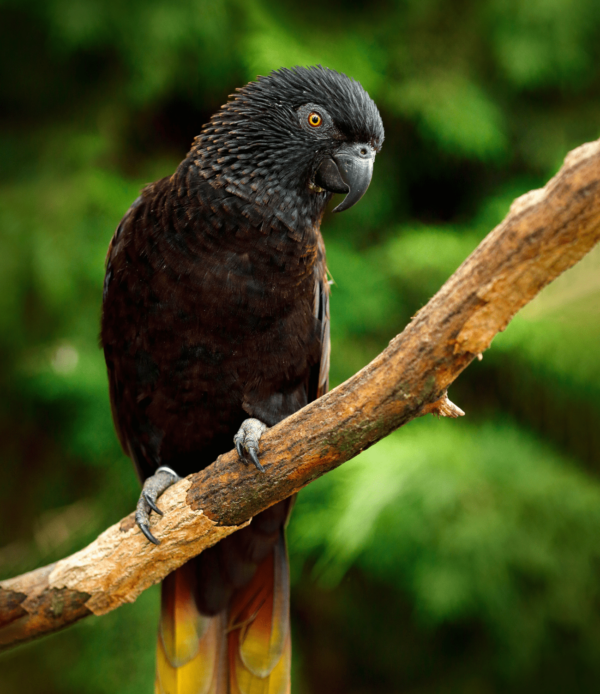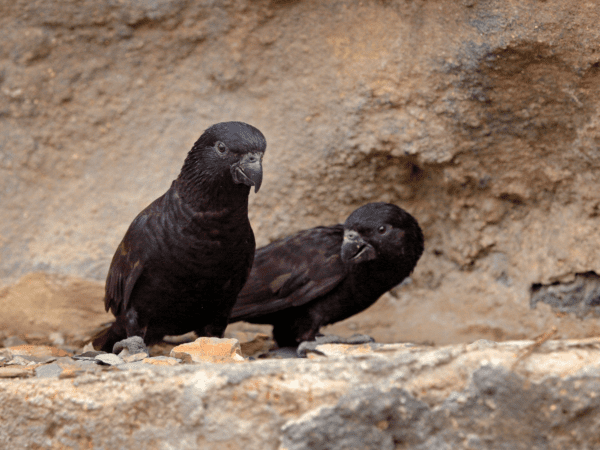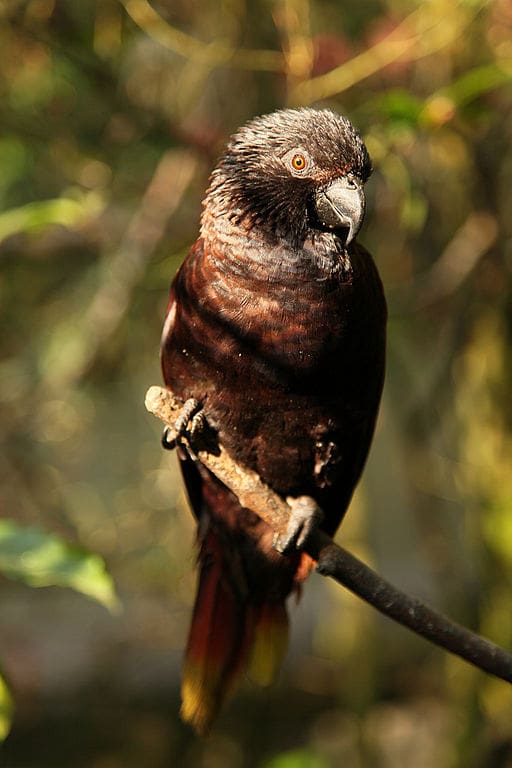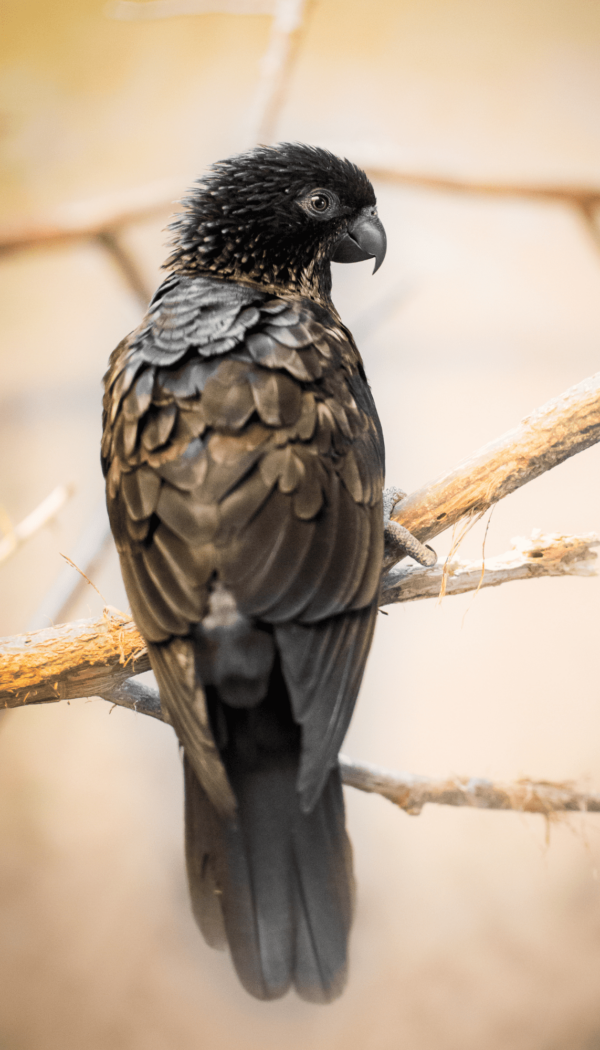Black Lory
Also known as:
Red-quilled Lory, Rajah/Raja Lory
Also known as:
Red-quilled Lory, Rajah/Raja Lory
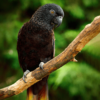
![© elvranharris derivative work: Snowmanradio [CC BY-SA 2.0] via Wikimedia Commons Black Lories perch on a branch](https://parrots.org/wp-content/uploads/2023/01/wpt_Black-Lory_1076-5-100x100.jpg)
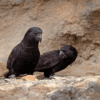
![© elvranharris [CC BY-SA 2.0] via Flickr A companion Black Lory perches on a branch](https://parrots.org/wp-content/uploads/2023/01/wpt_Black-Lory_1076-4-100x100.jpg)
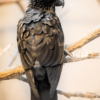
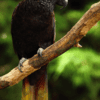
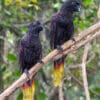
DID YOU KNOW?
The Black Lory is the only all-black lory or lorikeet.

Chalcopsitta

atra
Size:
32 cm (12.5 in)
Weight:
230-260 g (8-9.1 oz)
Subspecies including nominate:
C. a. atra, C. a. insignis, C. a. bernsteini, and a single specimen of C. a. spectabilis (C. atra x C. scintillata hybrid)
Colour Adult:
C. a. atra: Both adults in general black; rump violet/blue; undertail olive/yellow washed with red, bare black eye-ring, black skin at base of beak. Eye orange/red.
C. a. bernsteini: Red/purple markings on forehead and thighs, less evident in females; darker blue rump.
C. a. insignis: Head streaked grey/blue; forehead, face, thighs and underwing covers red; feathers of throat and lower underparts edged red; dull blue rump, undertail covers grey/blue.
Colour Juvenile:
C.a. atra: As in adult but with white cere and eye-ring. Eye grey.
C. a. bernsteini: As in adults.
C. a. insignis: Lores tinged red, forehead and face black, red less bright on thighs.
More Information:
Content Sources:
CITES
BirdLife International
Cornell Lab of Ornithology/Birds of the World
Parrots: A Guide to Parrots of the World, Juniper and Parr, 1998
Parrots of the World, Forshaw and Cooper, 1977, 1989. 2010 edition
Parrots of the World, Forshaw, 2006.
Parrots in Aviculture, Low, 1992.
Parrots: Their Care and Breeding, Low, 1986.
Captive Status:
A few in captivity (C.a. insignis).
Longevity:
—
Housing:
Aviary with well drained floor (sloping) or suspended cage over concrete base.
Diet:
Nectar made from baby cereal (no lactose) honey and malt extract or molasses, mixed with filtered water with the addition of wheat germ, made fresh once or twice daily, or a proprietary type (store bought) for small species; as well fresh fruit especially apple, orange, cactus fruits, and bananas and a few vegetables: corn, green leaves, hardcooked egg, carrot.
Enrichment:
Hanging nectar bottles or cups around aviary, providing browse with edible flowers, various chew and plastic toys (non-toxic); provide bowls of water for bathing.
Nest Box Size:
L-shaped, up to 9″ (22.9 cm) high, 9″ (22.9 cm) wide, 18″ (46 cm) long and 18″ (46 cm) deep; entrance hole 3″ (7.6 cm); also provide boxes for them to sleep in year round.
Clutch Size:
2
Fledging Age:
74 days
Hatch Weight:
—
Peak Weight:
—
Weaning Weight:
—
World Population:
Unknown; described as locally common. Stable.
IUCN Red List Status:
Least Concern
CITES Listing:
Appendix II
Threat Summary:
A BirdLife ‘restricted-range’ species. Can be seen in large flocks but numbers are unknown. International trade was moderately high, with 2808 exported between 1987 and 1990. Export from Indonesia was banned in September 1991.
Range:
C.a. atra: Western Vogelkop, Irian Jaya, Indonesia; and adjacent islands Batanta, Misool and Salawati, W Papuan Islands, Indonesia.
C.a. bernsteini: Misool, W Papuan Islands.
C.a. insignis: E Vogelkop, nearby Rumberpon Island, and Onin and Bomberai Peninsulas, Irian Jaya.
Habitat:
Open habitats, coastal coconut plantations, forest margins and mangrove; up to 200 m (656 ft).
Wild Diet:
Flowering Schefflera shrubs, coconut.
Ecology and Behaviour:
Frequents open habitats such as coastal coconut plantations, savanna, forest margins, and Eucalyptus groves; sometimes found in large flocks foraging in flowering trees.
Clutch and Egg Size:
2 rounded eggs, 30 mm (1.17 in).
Breeding Season:
Males in condition April and December.
Related Links:
—
